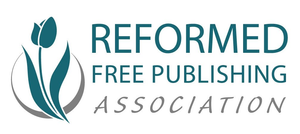
The Reformed Baptism Form: The Author (2)
Reformed Free Publishing Association

The origin of the Reformed baptism form can be traced both to England and to the European continent. During the years after the coronation of Bloody Mary in 1553, the pages of church history record the heartrending stories of ruthless persecution and martyrdom of faithful Protestants in England. Many Reformed saints who had first fled from the Lowlands now had to flee for their lives from England to parts of continental Europe.
Thus begins the second part of our story that traces the origin of our Reformed baptism form. In the year 1555, Petrus Datheen became a minister in Frankfurt, Germany at a church that John à Lasco initiated for refugees from the London Refugee Church. Under the gracious hand of God’s providence God again led Datheen to follow John à Lasco for the good of his church. We remember that Datheen would use à Lasco's liturgy to form and craft the beautiful lines of our Reformed baptism form. In Frankfurt the Lord blessed Datheen and his wife with a daughter named Christiana. But this time of peace did not last very long. In 1561 Datheen had to flee again as a Reformed exile, this time because the Lutherans in Frankfurt would not allow a Reformed congregation in their midst.[1]
So Datheen and his family traveled with a group of Reformed exiles to Frankenthal, Germany, located in the Palatinate.[2] They found rest in this city because elector Frederick III was an earthly ruler who supported the work of the Reformation. Frederick would later take part in the writing of the Heidelberg Catechism.[3]
At this time Datheen drank deeply from the well of Reformed writing—John Calvin, as well as Caspar Olevenius and Zacharius Ursinus.[4] Datheen became especially acquainted with the latter two writers because it was in Frankenthal that he translated the beloved Heidelberg Catechism into Dutch. Thus he was able to further immerse himself in the truths of the Reformation, but especially from the viewpoint of the comfort of the believing child of God. When one reads or hears the baptism form of which Datheen wrote so much, one cannot help but notice the comfort that it brings to the parents and to the church. Let us hear the prayer: “We thank and praise Thee that Thou hast forgiven us and our children all of our sins through the blood of Thy beloved Son Jesus Christ.” And how comforting is the following statement in the second section about the significance of being baptized in the name of God the Father: “When we are baptized in the name of the Father, God the Father witnesseth and sealeth unto us that He doth make an eternal covenant of grace with us. . .”
Although Datheen is neither the sole, nor the original author of the form, we are thankful for the role he did play in its creation, and that he desired for this piece of liturgy to comfort God’s people with the teachings of the Reformation. Our baptism form is firmly grounded in Reformation truth and written for the comfort of godly parents and the whole church. May this form continue to be preserved as the official form of Reformed Churches as was first declared at the Synod of Dordt.
To the conclusion of Datheen’s story as author of the Reformed baptism form we will turn next time.
___________
This post was written by Mike Feenstra, a member of the Southwest Protestant Reformed Church in Wyoming, Michigan. Mike also teaches fifth grade at a Christian school in West Michigan. If you have a question or comment about this blog article for Mike, we welcome them in the comment section on the blog.
___________
[1] Hanko, Portraits of Faithful Saints, 232–233.
[2] Datheen produced sterling work during his ministry in the Palatinate. Recommended reading can be found in the very worthwhile book Portraits of Faithful Saints by Herman Hanko, 233–236.
[3] For additional reading, refer Portraits of Faithful Saints, 186.
[4] What wonderful years those must have been in the Palatinate! How God used Frederick, a godly prince, that “rare bird,” for the good of Reformers like Datheen and for God’s people, for whom Datheen wrote!
← Older Post Newer Post →


